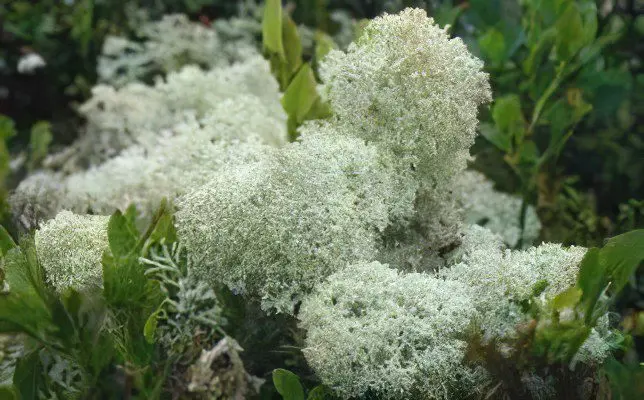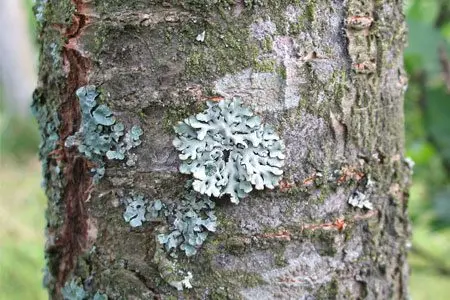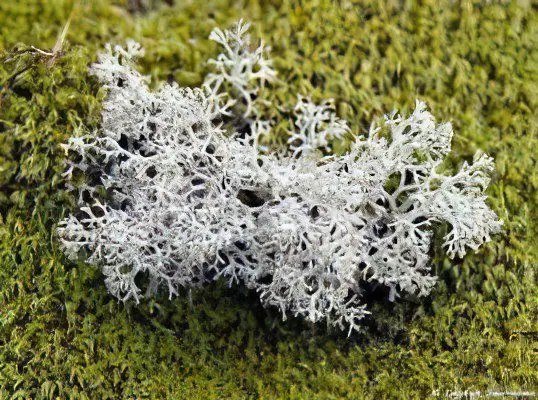Contents
Useful properties and use of lichen
Useful properties of lichen

The beneficial properties of lichen were known in Ancient Egypt and Medieval Europe. In those days, scientists had not yet studied the biological composition of this medicinal plant and used it solely for religious reasons. Nevertheless, already at that time, in many cases, a positive effect of such treatment was noted. What is the secret of the healing power of lichen? The answer lies in its biological composition.
In the middle of the twentieth century, medicine began to seriously study the healing properties of lichen. As a result of the research, the presence of the so-called lichen acids was found in it, among which it is especially worth highlighting usnic, barbatic, fumarprocetraric and squamic acids. They contain some types of lichens that can show a strong antibacterial effect. In addition, scientists from France, the USA, Russia and a number of other countries have revealed the antibiotic effect of these living organisms.
As a result of research, entire groups of antibiotics have been discovered that have different effects on bacteria and inflammatory processes. For example, some species inhibited the growth of staphylococci, while others had an antibacterial effect on other types of parasites. Among other things, lichens contain fats, proteins, carbohydrates and other elements useful to the human body. The content of these substances is not the same in different species.
Lichen application
In many countries, these healing groups of organisms are part of the medicines used to combat boils, streptococci, staphylococci, lupus erythematosus and other skin diseases. Medicines based on lichens are effective in the treatment of varicose and trophic ulcers, the removal of inflammatory processes in soft tissues, and in some gynecological diseases and burns. They are also used in plastic surgery. Preparations from certain types of lichen have a strong antimicrobial effect.
In folk medicine, lichen was used more than four thousand years ago. In some Scandinavian countries, its decoctions are still used to treat tuberculosis, catarrhs, and colds. There is a good therapeutic and tonic effect of such drugs.
Decoction for cough: a tablespoon of lichen (parmelia) should be poured with a liter of water, put in a water bath, boil for two hours after boiling. Take this remedy 3 times a day for half an hour before meals. The decoction must be stored in the refrigerator. It is recommended to drink it warm.
Lichens on trees
The appearance of lichens extremely adversely affects the development of the tree. Growing along the trunk and branches, they clog the pores and interfere with the full air exchange of the tree. In addition, they provide an excellent habitat for insect pests. The appearance of this vegetation on the trees is often associated with the aging of the tree, poor care, severe frosts, resulting in cracking of the bark. All these adverse factors significantly reduce the tree’s ability to resist pathogens.
At the first appearance of lichens, they must be immediately cleaned off. For this, a wooden scraper is usually used, which is used to process all harmful vegetation on the trunk and branches. All cleaned places are additionally treated with a special solution of iron sulphate, otherwise the infection may recur. In order to protect the trees from the colony of these parasitic organisms, the trunks are whitewashed at the end of autumn and winter. However, it should be noted that the appearance of lichens indicates a good ecology of this place.
Lichen Parmelia

Parmelia is widely used in folk medicine for the treatment of severe cough, acute colitis, pulmonary tuberculosis, diseases of the gastrointestinal tract.
Parmelia – suppresses severe coughing fits, helps to thin mucus. Relieves inflammation at any stage of bronchitis. From the first day of admission, improvements in health status are observed.
Decoctions are applied externally in the form of compresses and lotions for washing purulent wounds and trophic ulcers. Parmelia produces an excellent healing effect. Some recipes of traditional medicine with the participation of this lichen are actively used now.
Recipe for compresses: 5 tablespoons of lichen should be poured with half a liter of water, brought to a boil and boiled over high heat for 25-30 minutes, then infused at room temperature until cool, then strain and squeeze the raw material. The remedy is applied externally.
bearded lichen

Bearded lichen has pronounced antimicrobial properties, which makes it a good remedy for fighting skin diseases and trophic ulcers. Like many other types of lichen, bearded vulture is a natural antibiotic. Preparations based on it have anti-inflammatory, enveloping, expectorant, wound healing and antiviral effects. From a medical point of view, the most useful component of the bearded man is usnic acid.
It is this acid that helps to more effectively cope with various diseases of the lungs and bronchi. In folk medicine, the bearded man is often used to strengthen the human immune system. It grows mainly in taiga forests. As a medicine, it is collected even in winter.
fruticose lichens
This group is very easy to recognize, since such lichens have a peculiar shape of a hanging beard. Their thallus can be of various sizes – from a few centimeters to half a meter. Due to the high content of fats, proteins and carbohydrates, they can serve as food for livestock, but due to the insufficient amount of vitamins in them, such food cannot be considered complete.
These include the following species: palmate cladonia, longest usnea, pale ocher alectoria. Some fruticose lichens are the basis of anti-inflammatory and antibacterial drugs. They are widely used in folk medicine in the treatment of flu, colds and a number of stomach ailments.
Scale lichens
Scale lichens include: crowded lecidea, diverse lecanora and other species. Their thallus usually has the appearance of a crust, the thickness of which can be varied. Scale thallus, as a rule, is small in size, their diameter can be several millimeters or centimeters, although in some cases it reaches twenty to thirty centimeters.
Such lichens can be used as bioindicators. They are the last to leave the territory with poor ecology, but if they have already left, it means that things are very bad. For their strong antiviral and antimicrobial actions, lichens have received recognition from pharmacologists in many countries. In folk medicine, they are widely used to treat festering wounds and coughs.
Leaf lichens
The thallus in lichens of this species has the form of a leaf-shaped plate located horizontally on the substrate. In old lichens, it acquires an irregular shape, although it usually has round contours. The main feature of the leaf thallus is its dorsoventral structure, due to which the upper surface differs in color and structure from the lower surface.
Due to the high content of various useful acids, these unique organisms are actively used in folk and official medicine. Preparations based on them are effective in combating various skin diseases, trophic ulcers, respiratory diseases. Usnic acid is considered the main therapeutic component.
Lichens are epiphytic
Epiphytic lichens are excellent bioindicators of environmental pollution, since they receive all the components necessary for life from the air. They significantly help scientists in environmental monitoring. The most famous varieties are parmelia olive and hypogymnia swollen. Their peculiarity lies in the absolute intolerance of any pollution, so they cannot be found closer than 50 km from industrial zones or factories.
Goldenrod lichen
It is a collection of rosettes of orange-yellow color, consisting of wide and rounded blades. Grows on treated wood, fences or wooden structures. This species is very susceptible to pollution. Used in industry for dyeing fabrics red.
Lichen deer moss

It contains usnic acid, which gives it strong antibiotic properties, due to which preparations from it are actively used in folk and traditional medicine. The lichen got its name because of the predilection of these animals for it. During the winter months, it can make up to 90% of their diet. The content of proteins, fats, carbohydrates, sugars and other useful components makes this type of lichen very nutritious. Its only drawback is the lack of a sufficient amount of vitamins.
Contraindications to the use of lichen
Contraindications to the use of lichen have not yet been fully studied by science. Allergic reactions to some of its components are possible. It is also impossible to exclude individual intolerance. Preparations based on lichens are not recommended for pregnant and lactating mothers – adverse side effects are possible. Before starting a course of treatment, you should consult with your doctor.









